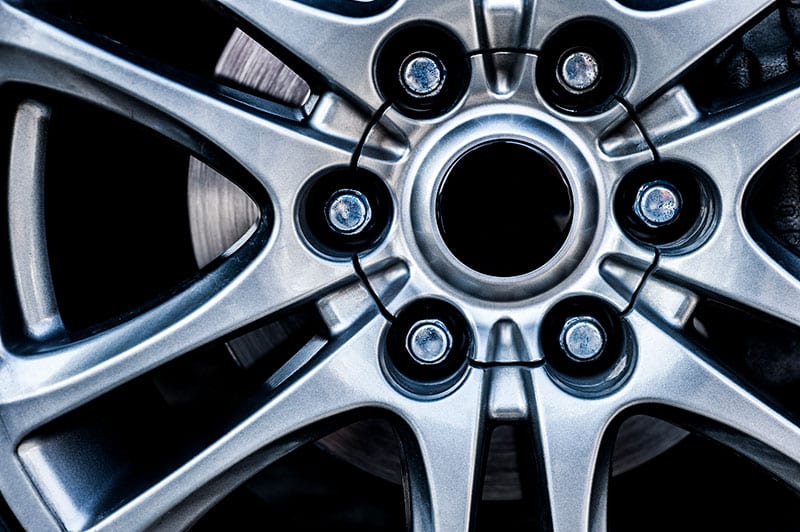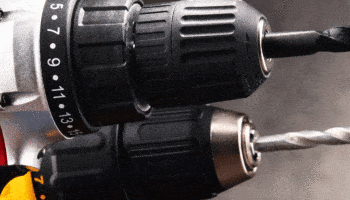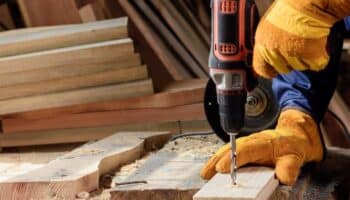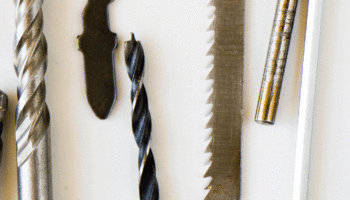Life is so much easier when you have the right tool for a job.
You’ll know this if you’ve ever needed to change a tire. And now you’re tool shopping but wondering what size of torque wrench you need.
For tire changing and other general mechanical issues, the best size torque wrench is generally a ½ inch. It has a working range of 30 to 60 ft. lbs. making it the perfect choice for tightening lug nuts.
Stick around, and I’ll provide more in-depth details on what the best size is for changing tires and a variety of other applications too.
What Size Torque Wrench Do You Need?
Let’s talk about the different applications of torque wrenches and the appropriate choice for each.
Here’s a quick list of jobs a torque wrench would be the right tool for.
- Wheels
- Cylinder head
- Intake manifold
- Connecting rod
- Suspension bushing
- Calipers
- Struts
And that’s just to name a few that are limited to your car. And depending on your automotive knowledge, you might not even know what some of those things are. Meaning the chances of you fixing them are fairly small.
For most people, having a torque wrench that can handle tire changes is sufficient. If you’re a budding mechanic, you’ll probably need something more.
Common Sizes
There are four common sizes, with each size geared toward a different job—although there may be some crossover at times between the sizes.
- 1/4-inch
- 3/8-inch
- 1/2-inch
- 3/4 to 1-inch
1/4-inch torque wrenches are the best choice for anything with a small gas motor such as mopeds and motorcycles.
3/8-inch is the necessary size for engine repairs such as tightening spark plugs.
1/2-inch. As mentioned above, this is the choice if you’re looking for a torque wrench to have on hand for tire changes.
3/4 to 1 inch. This size is fairly specific to larger vehicles such as construction vehicles or semis.
Different Types of Torque Wrenches
There are many types of wrenches, one of which is the torque wrench. But things get even more granular from there.
There are 5 different types of torque wrenches.
- Click
- Beam
- Split beam
- Digital
- Slip
Click type. These are entry-level and probably the most popular type of torque wrench. They are called click wrenches due to the fact they click when the desired amount of torque is reached. If you were looking to compare them with another type, they match the beam type fairly closely in terms of accuracy.
However, there’s a fairly important downside to these. Even though the click will indicate you’ve reached your desired torque, it doesn’t stop you from continuing to turn the wrench and potentially overtightening a nut.
Beam type. This wrench has a scale on the handle and a long beam that’s attached to a plumb line at the end. You read the scale much like you would an old-style bathroom scale where a pointer moves to the right number. Only in this case, the number indicates the amount of torque being applied.
The simple design and applied physics of the beam type mean it provides accurate readings, however, those readings are much more difficult to interpret. And when compared to a click-style wrench they aren’t as convenient to use.
This type isn’t often recommended for beginners.
Split beam type. Technically, this is still a beam type, however, it does have some unique characteristics. One that none of its parts are welded together. It has two beams. The main beam is the handle you use to apply torque and the secondary beam is an indicator.
Like a click wrench, a good-quality split beam will click when torque is reached, meaning you don’t need to watch the scale. You set your required torque value using a set knob and lock lever.
Digital type. This type of torque wrench offers the most accurate reading since they are pre-calibrated. You also have the option to set and store multiple torque settings. And thanks to a notification system, you always know when you have reached your target torque.
These are the most expensive torque wrenches, and they do come with some drawbacks. With some models, you need to zero out settings if you don’t want to lose calibration over time, which means it’s necessary to reset them occasionally. Moreover, they require batteries, which can be a real hassle.
Slip type. This type does offer the benefit of losing its grip when torque is achieved, which is a definite plus. However, you can’t monitor the current torque, and they aren’t good for high-torque applications.
Using Adapters
Now that you know the different types of torque wrenches, let’s discuss what happens when the lug nut you need to work on is not available in both 1/2” and 3/8” sizes.
In cases like that, you might want to get a high tensile 3/8” to 1/2” adapter. This way, you’ll still be able to use your 1/2” torque wrench on lugs of different sizes.
Lug Nuts vs Lug Bolts
While they might look and sound similar, lug nuts and bolts are very different. Sure, they’re both used to secure a car wheel to the wheel stud and the hub, but their applications differ.
Lug nuts are commonly used in wheels without hubcaps, as they tend to protrude from the hub, whereas lug bolts screw in all the way into the hub, leaving enough space to place a hubcap.
Lug bolts are typically longer than lug nuts.
How Much Torque for Lug Nuts?
Lug nuts aren’t one size fits all. The nuts on each car are manufactured to match the thread size of the wheel studs. It’s important to torque to the specifications if you want to maintain functionality and safety.
Along with the appropriate amount of torque, you also need to know the right torque pattern, which is often a star pattern. So you don’t just torque each nut in a circle. For example, you could tighten the top right and then the bottom left, and so on.

Here is the torque sequence based on lug count:
If you have 4 lug nuts, tighten them in the following sequence:
Top > Bottom > Left > Right
If you have 5 lug nuts, tighten them in the following sequence:
Top > Bottom Right > Top Left > Top Right > Bottom Left
If you have 6 lug nuts, tighten them in the following sequence:
Top Left > Bottom Right > Center Left > Center Right > Bottom Left > Top Right
If you have 8 lug nuts, tighten them in the following sequence:
Top > Bottom > Center Left > Center Right > Bottom Left > Top Right > Bottom Right > Top Left
When torquing, you do so in a measurement called foot pounds. You torque depending on the size of your lug nuts.
If you don’t know the size of your lug nuts, you can always check the label on the inside of your car’s door jamb. There, you should be able to find recommended tire pressure, lug torque, and much more.
Alternatively, if you have an active internet connection, you can also go to CarTreatmenst.com. Once you know the size of the threads, you know how much torque in foot-pounds to use.
There is a two-step process involved when torquing lug nuts.
The first step is to properly seat your wheel. Do this using about 40 pounds of torque. Once the wheel is seated, you do your final torque based on the thread size of your lug nut.
| Lug Nut Thread | Torque in Foot-Pounds |
| 7/16-inch | 75 to 85 |
| 1/2-inch | 85 to 95 |
| 9/16-inch | 130 to 140 |
| 5/8-inch | 130 to 140 |
| 12 mm | 70 to 80 |
| 14 mm | 85 to 90 |
Conclusion
As you can see from the above, there are a lot of variances when it comes to torque wrenches. And while it might be fun—or not—to spend several hundred dollars on a digital torque wrench, it probably isn’t necessary if your aim is to have something in your trunk in case of tire changes.
In the case of tire changes, get a 1/2-inch wrench, but remember you still need to know the thread size of your nuts and use the right amount of foot pounds.
If you have a motorcycle, it would be a better idea to have a 1/4-inch wrench. If you’re doing engine repairs such as spark plugs, have a 3/8-inch on hand.
Remember, having the right tool for the job is important. It not only simplifies things for you, but it also makes sure the job is done right.
Hopefully, you’ve found the answers you were looking for! If so, why not check out the related articles below? On the site, you can always find all sorts of DIY guides and solutions for everyday appliance issues, such as a range hood that won’t turn off.
Have a great day.
— Craig.







